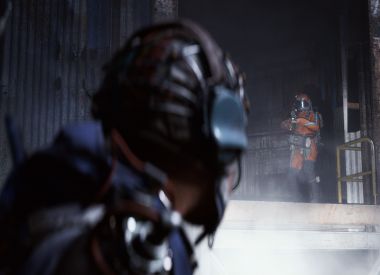If you were to ask today's gamers where they go to find the best in indie games, there's a good chance they'll mention Steam or some other curated online game store. But for gamers of a certain age – meaning us older folks – the idea of indie games is inextricably linked to one thing: Adobe Flash.
That's because, from the earliest days of the internet, building flash games was the easiest way for indie designers to get their work in front of an audience. And for that reason, the web became home to thousands of Flash-based games. The Flash game genre also spawned countless websites dedicated to them.
But a few years ago, Adobe announced that they'd be ending support for Flash at the end of 2020. Almost immediately, gaming historians and creators started to scramble for ways to preserve what had become almost two decades' worth of gaming history. And now that the end of Flash has come and gone, here's a look at what those efforts have managed to preserve, and where to find it.
Migration to HTML5
In many cases, the simplest solution for preserving legacy Flash-based games was to recreate them in HTML5. For that reason, sites like Solitaired rebuilt all-new versions of online card games and began to attract big gaming audiences. And, seeing their success, it wasn't long before other sites, like word unscrambling games, got into the act by porting some of the simpler Flash game content. But that wasn't the end of HTML5's use to preserve Flash games.
Sites like AddictingGames, who had curated one of the biggest libraries of Flash game content anywhere, started working flat-out to convert as much of their content to HTML5 as they could. The result was an impressive collection of plugin-free games, now numbering close to 900. But because Flash gave creators so much flexibility, it proved impossible to convert the vast majority of existing games to any other format.
Online Flash Emulation
Not satisfied with simply losing access to Flash games forever, multiple efforts sprang up to create emulators that would be capable of running Flash content after the real thing went dead. The most well-known is called Ruffle, which is a multiplatform emulator written in the Rust programming language. It worked so well that it ended up forming the core of the Internet Archive's Flash gaming library, which lets you play several thousand games and animations right in any modern web browser.
And another Flash-heavy website called Newgrounds even went as far as to get special permission from Adobe to create their own version of Flash Player. The trouble is that modern operating systems like Microsoft's Windows 10 started to block users from running it because it's still assumed to have the same security flaws that doomed Flash in the first place.
Downloadable Archives
Even though migration to HTML5 and online emulation has saved a large number of legacy Flash games from oblivion, the truth is that they hardly made a dent in the sheer volume of content that was out there. Thankfully, much of it has been preserved – over 78,000 games and animations in all – by a project called Flashpoint.
It uses a containerized Flash implementation that can't connect to the internet on its own. That means it doesn't suffer from any security headaches and should be able to run on modern operating systems for the foreseeable future. You won't even need a custom gaming rig to play games with it. The designers provide it in the form of a mammoth 532GB archive or a download-as-you-play version that fetches whatever game the user requests and adds it to their local collection.
Any way you look at it, Flashpoint is a treasure trove of gaming history. It has everything from rudimentary stick-figure games up to the most complex creations ever built using flash. And it also has some early work from well-known indie gaming creators like Terry Cavanagh of VVVVVV fame, and early prototypes of games like Castle Crashers, which went on to be huge hits on multiple console platforms.
Flash Gaming History Lives On
The bottom line here is that although the shuttering of Adobe Flash marked the end of an era in indie gaming, it didn't erase it from history. And that's a good thing. After all, it's pretty easy to trace a direct line from the early-internet boom in Flash games straight to the mobile app-store gaming we know and love today.
In short, gamers – and games – wouldn't be what they are today had it not been for the 20-plus years of creative activity that Adobe's Flash made possible online. And now, thanks to the efforts of a few dogged preservationists, a whole new generation will be able to look back at that period – not in snapshots – but by experiencing it themselves.

















